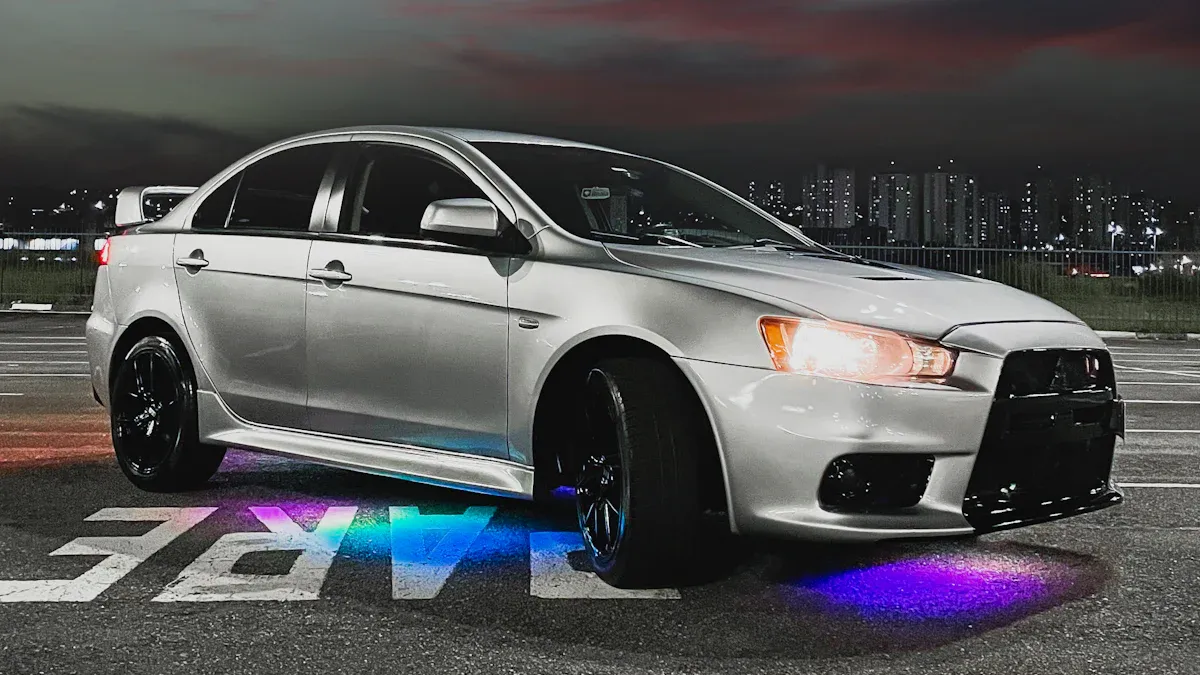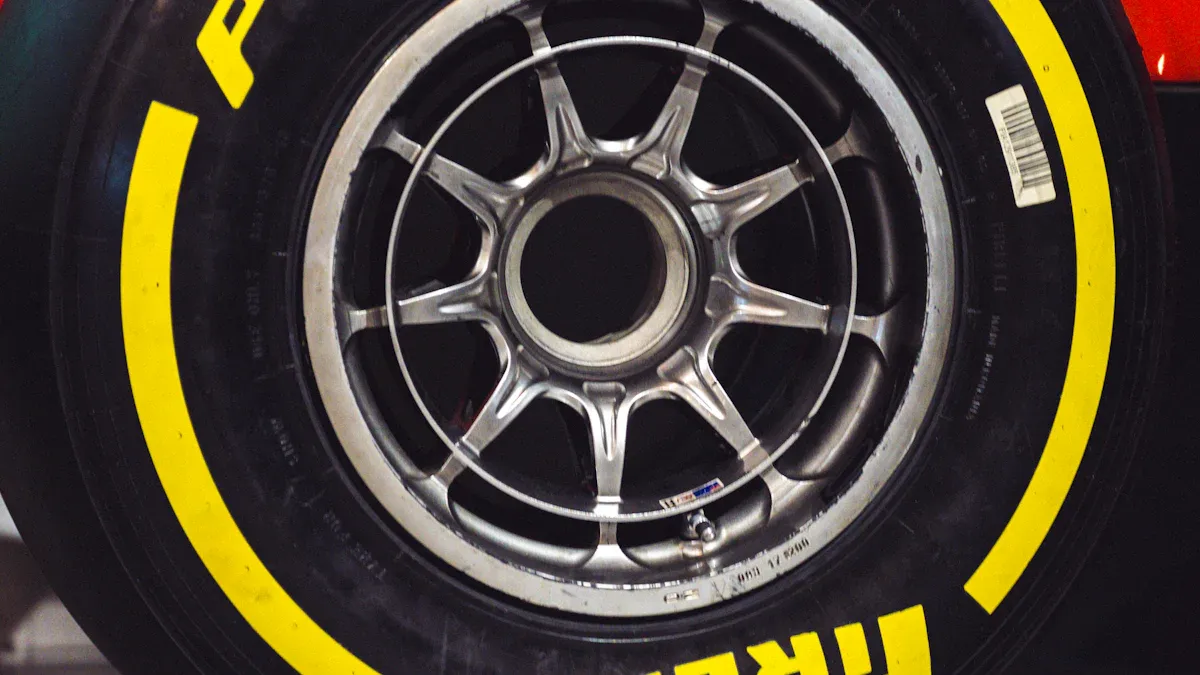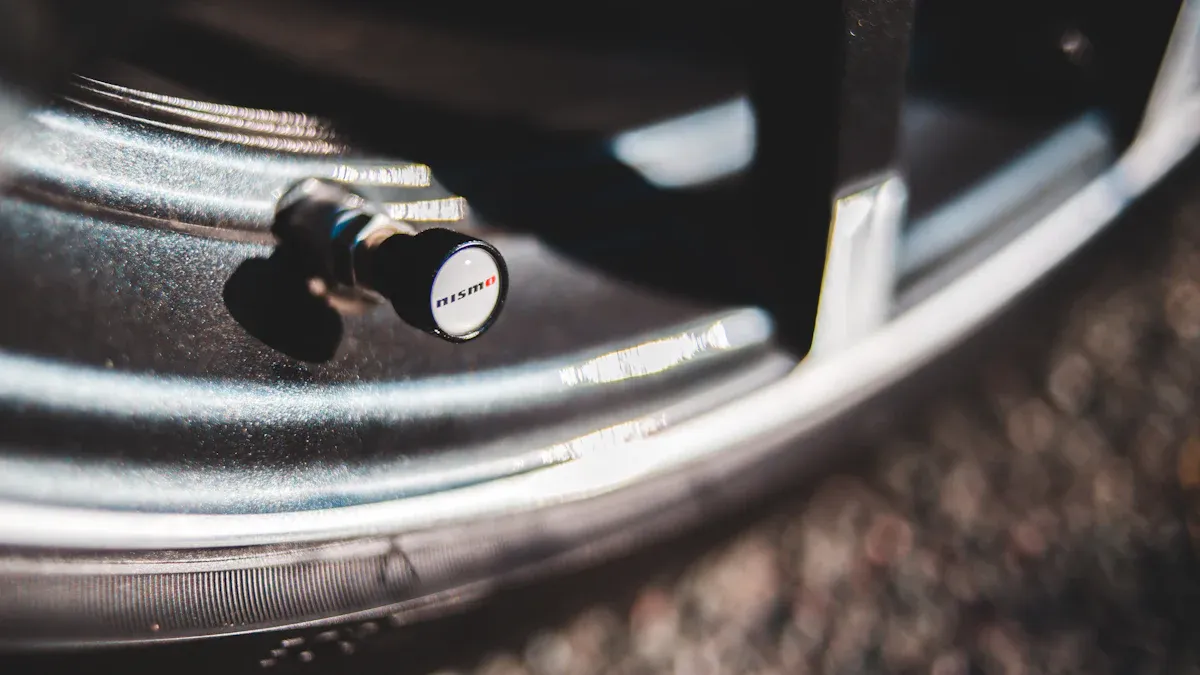

lug bolts
home > lug bolts

| 6 spline lug bolt | |
|---|---|
| PACKAGE | 20 pcs/bag, 10 bags/case |
Detailed data

| PART NO. | 24MM | 28MM | 30MM | 33MM | 40MM | 45MM |
THREAD (F) M12x1.25 M12x1.5 M14x1.5 M14x1.25 |
| CHROME | FS6S24-F | FS6S28-F | FS6S30-F | FS6S33-F | FS6S40-F | FS6S45-F | |
| BLACK | FS6S24BK-F | FS6S28BK-F | FS6S30BK-F | FS6S33BK-F | FS6S40BK-F | FS6S45BK-F |

| ball seat (17mm) hex bolt | |
|---|---|
| PACKAGE | 20 pcs/bag, 10 bags/case |
Detailed data

| PART NO. | 24MM | 28MM | 33MM | 40MM | 45MM | 50MM | 60MM |
THREAD (F) M12x1.5 M14x1.5 |
| CHROME | FSBS24-F | FSBS28-F | FSBS30-F | FSBS40-F | FSBS45-F | FSBS50-F | FSBS60-F | |
| BLACK | FSBS24BK-F | FSBS28BK-F | FSBS33BK-F | FSBS40BK-F | FSBS45BK-F | FSBS50BK-F | FSBS60BK-F |

| acorn seat (17mm) hex bolt | |
|---|---|
| PACKAGE | 20 pcs/bag, 10 bags/case |
Detailed data

| PART NO. | 24MM | 28MM | 30MM | 33MM | 40MM | 45MM | 50MM |
THREAD (F) M12x1.25 M12x1.5 M14x1.5 M14x1.25 |
| CHROME | FSAS24-F | FSAS28-F | FSAS30-F | FSAS33-F | FSAS40-F | FSAS45-F | FSAS50-F | |
| BLACK | FSAS24BK-F | FSAS28BK-F | FSAS30BK-F | FSAS33BK-F | FSAS40BK-F | FSAS45BK-F | FSAS50BK-F |
choosing the right clip-on wheel weights
When it comes to a vehicle’s safety and performance, one of the most important components that people often overlook is the lug bolts. They are used to secure the engine, chassis, and wheels.
It is very important to securely fasten the wheels with bolts. If the lug bolts are in good condition and properly installed, accidents caused by loose wheels can be avoided. This is especially true for high-horsepower automobiles because the forces on the wheels are greater. The performance of a car depends on how well it is bolted together. High-quality lug bolts made of sturdy materials improve drivability, even in harsh conditions. They also help stabilize the vehicle.
Fortune would like to introduce readers to the tire bolt. Many people don’t realize how important this bolt is to ensure that their car is safe and runs well. Not fully understand the role these fasteners play in everyday driving. We want to help our customers understand the importance of the tire bolt and provide them with the knowledge they need to effectively maintain their vehicles.
What is lug bolts?
Lug bolts are specialized fasteners used primarily in the automotive industry to secure wheels to hubs. Unlike conventional bolts, lug bolts are designed to meet the specific requirements of wheel attachment, ensuring that the wheel is held securely in place while traveling. They are threaded at one end and tapered or flattened at the other. This design allows them to fit snugly into the wheel bore, ensuring a secure connection.

The importance of choosing the right lug bolt
If you use the wrong lug wheel bolts, you could put your car in danger. If the lug wheel bolts are too short, they may not fully attach to the wheel hub. This can cause the wheel to fall off while you’re driving. Lug wheel bolts that are too long may affect other parts of your car or even damage the wheel.
Safety of the vehicle and its occupants depends on the integrity of the wheel assembly. improperly selected or installed lug bolts can cause the wheel to fall off, resulting in a catastrophic accident.
Correct lug bolts ensure optimum performance. Bolt size, thread pitch and material strength specifications vary from vehicle to vehicle. Using the correct lug bolts not only improves vehicle performance, but also extends the life of the wheel assembly.
Correct lug bolts also help prevent problems such as corrosion and wear. For example bolts made of materials that are not suited to the environment can lead to rust and deterioration that can affect the connection over time.
How to choose the right lug bolts? comprehensive guide
Lug bolts are the unsung heroes that keep your wheels firmly in place and ensure a safe and smooth ride. However, choosing the right lug bolts isn’t just about picking the right set. There are several things to think about, like what kind of vehicle you need, the material, how long it should be, how it will be attached, and safety.
Before diving into the specifics of lug bolts, it’s important to understand the specific requirements of your vehicle. Each vehicle has unique specifications. Always refer to the owner’s manual or consult a professional.
Number of Lugs
The first thing to consider is the number of lug bolts required for the vehicle. Most vehicles have four or five lug bolts, but some larger vehicles may have six or even eight. Always refer to the owner’s manual or consult a professional to determine the correct number of lug bolts.
Thread Size and Pitch
Next, you need to consider the thread size and pitch of the lug bolts. Thread size is usually measured in millimeters (for metric vehicles) or inches (for U.S. vehicles). Pitch refers to the distance between the threads. Using the wrong thread size or pitch can lead to improper installation and compromise safety.
Thread Seat Types
Lug bolts are available in different seat types, including tapered, ball, and flat. The lug seat type must match the wheel design to ensure a secure installation. Tapered seat types are the most common and are designed to fit snugly on the wheel. Spherical seat types are commonly used in racing cars, while flathead seat types are less common but can be found on certain vehicles.
Materials and finishes
Lug bolts are made from a variety of materials, each with its advantages and disadvantages. The most commonly used lug bolt materials include.
1. Steel: Steel is the most commonly used lug bolt material due to its strength and durability. Steel lug bolts can withstand high stresses and are often coated with a corrosion-resistant coating. They are heavier than other materials.
2. Aluminum: Aluminum lug bolts are lighter than steel and are preferred for racing and high-performance vehicles. They offer excellent corrosion resistance and can improve overall vehicle performance by reducing unsprung weight. However, they may not be as strong as steel and are more likely to slip if over-tightened.
3. Titanium: Titanium lug bolts are known for their excellent strength-to-weight ratio. They are much lighter than steel bolts and have excellent corrosion resistance. Titanium lug bolts are generally more expensive and may not be necessary for everyday vehicles.
4. Chromium-molybdenum steel: Chromium-molybdenum steel is a high-strength alloy composed of chromium and molybdenum. Lug bolts made from chromium-molybdenum steel are very strong and are commonly used in high-performance applications that require extreme strength.
Ensuring Proper Thread Engagement
Proper thread engagement is critical to the safety and performance of your vehicle. A good rule of thumb is to make sure there are at least 5 to 7 threads engaged when tightening the lug bolts. Insufficient thread engagement can cause the lug bolts to fail, which can result in the wheels coming off while driving.
Torque Specifications
Each vehicle’s lug bolts have a specific torque specification, which determines how tight the bolt should be. Over-tightening can cause the threads to wear out or even break, while over-loosening can cause the wheel to come loose. Always refer to your owner’s manual for proper torque specifications and use a torque wrench to ensure accuracy.
Regular Inspection and Maintenance
Regular inspection and maintenance of lug bolts is vital to safety. Check for signs of wear, such as rust, deformation or stripped threads. If you find any problems, be sure to replace lug bolts immediately. Regular inspection of lug bolts is also a good habit, especially after a long trip or tire replacement.
Signs of Wear and When to Replace
Knowing when to replace lug bolts is crucial to keeping your vehicle safe. Signs of wear include visible rust, cracks, or deformation. If you experience any unusual vibrations or noises while driving, this could be a sign of loose or damaged lug bolts. In this case, it’s best to have it inspected by a professional.

Installing Wheel Bolts
The proper installation of wheel bolts is critical to ensuring the safety and performance of your vehicle. The following is a step-by-step guide to help you properly install your wheel bolts:
1. Gather tools: You will need a tire wrench or torque wrench, a jack, and jack stands.
2. Jack the vehicle: Use the jack to lift the vehicle off the ground. Make sure to secure it with jack stands for safety.
3. Remove old tire bolts: If you are replacing old tire bolts, use a tire wrench to remove them. Turn counterclockwise until loose.
4. Inspect wheels and hubs: Before installing new wheel bolts, inspect wheels and hubs for any damage or debris. Clean surfaces as necessary.
5. Install new wheel bolts: Insert the new wheel bolts into the hub. Tighten by hand to ensure they are properly seated.
6. Tighten wheel bolts: Using a torque wrench, tighten the wheel bolts to the torque value specified by the manufacturer. This information can usually be found in the owner’s manual. 7.
7. Lowering the Vehicle: After tightening all wheel bolts, lower the vehicle to the ground.
8. Final check: After lowering the vehicle, perform a final check to ensure that all wheel bolts are tightened.
9. Maintaining Wheel Bolts
What is the main difference between a lug nut and a bolt?
While wheel bolts and wheel nuts perform similar functions in securing wheels, they are not interchangeable. lug bolts are typically used on vehicles where the shape of the bolt allows for direct attachment to the wheel, while lug nuts are used with wheel bolts that are permanently secured to the vehicle hub.
One of their main differences is the method of installation. lug bolts are inserted directly into the wheel and tightened onto the hub, while lug nuts are threaded onto the wheel studs. This difference affects the ease of installation and removal. lug bolts may require special tools to install, while lug nuts can usually be removed with a standard socket wrench.
Another difference lies in the design and strength of the two types of fasteners. lug bolts are typically designed to withstand greater loads and stresses, making them suitable for high-performance applications. In contrast, lug nuts may be more flexible in terms of compatibility with different wheel designs and sizes.


